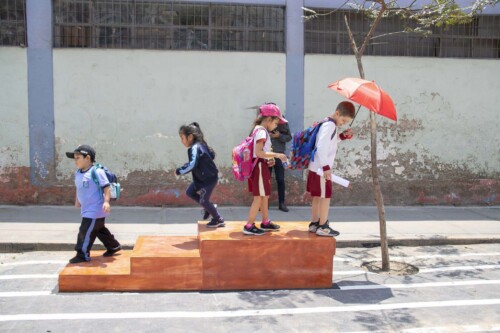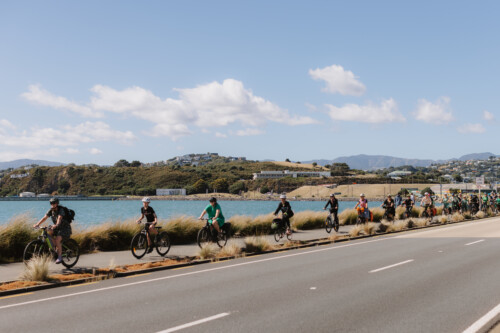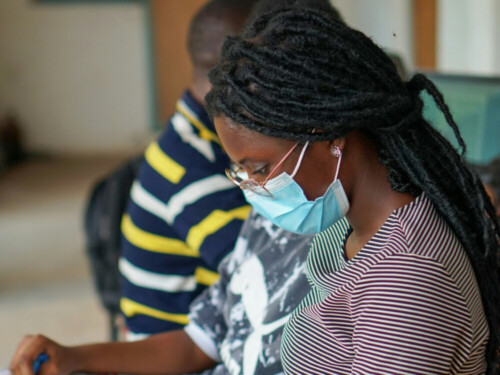
Scale and Sustainability: Highlights of the Streets for Kids 2023 Projects
Learn how street transformations designed for children can be scaled up and made permanent.
Executive Secretary of Conservation and Public Services, Fortaleza City Hall, Fortaleza, Brazil

In addition to his roles in conservation and public services, Luiz is the president of the Municipal Road Safety Committee and coordinates the Transportation and Traffic Immediate Action Plan, which includes all urban mobility solutions implemented in Fortaleza in the past five years.
What are the biggest mobility and/or road safety challenges in your city?
The main challenge is to implement projects that change the paradigm of urban mobility in Latin American cities, which for a long time prioritized the individual transport of passengers. We want to change the logic of this equation so that public policies that prioritize public transportation and active mobility without harming individual transportation.
What’s it like to be a pedestrian in your city?
Over the past three years, in partnership with the Bloomberg Philanthropies Initiative for Global Road Safety, we have been doing a number of pilot projects, and have expanded them as public policy. Most of these projects empower and protect vulnerable users in traffic: cyclists and pedestrians. Today, Fortaleza has areas of calm traffic, we have already started a policy of implementing raised pedestrian crossings and diagonal crossings. In these areas, it is more comfortable and safer to be a pedestrian. These policies completely change the pedestrian experience in Fortaleza, which for a long time prioritized individual transportation.
Tell us about an innovative urban project that has inspired your work.
Fortaleza is inspired by temporary interventions that recover spaces for pedestrians in public areas. Pilot projects have shown great impact when they are done quickly, at low cost, and with the support of City Hall and the local population. New York is a classic example: the closing of Broadway began on a temporary basis before becoming permanent. Here in Fortaleza, we made this change of behavior recently, with the “Cidade da Gente” project, implemented in a public square in the Cidade 2000 neighborhood. It was our first time doing this, and people embraced the cause with such enthusiasm that we turned the temporary project into a permanent work.
What is the biggest challenge or the most common obstacle you face when implementing innovative projects in your city?
The biggest challenges are to have popular support for behavior change in Urban Mobility projects and to continue engaging civil society in our actions so people keep up this support for changes already happening.

What improvements in mobility, public space or road safety would you like to see in your city by 2030?
In relation to road safety, the ideal and acceptable is zero death. This is the horizon to guide us. We want to get to the level of cities like Barcelona or London, for example, that have between one and two traffic deaths for every 100,000 residents. We have been moving towards this: in the last four years, we reduced from approximately 15 deaths per 100,000 residents to 9.7. Regarding mobility, we hope that by 2030 we will strengthen and consolidate what has already been done, which is a continuous expansion of cycling and walking as a means of transportation and to maintain quality public transport, attractive. The city has only to gain from this.
Any other thoughts regarding urban improvements, mobility, public space, and cities?
Urban mobility is a completely comprehensive theme and has an impact on various dimensions of a city’s life. It goes beyond being merely a matter of vehicular flow, mobility has to do with public health, individual health, environment, reduction of perception of violence, reduction of social inequities and complexity of urban life. This is what we are implementing in Fortaleza.
Any reading, listening, or observing? (Please recommend a book, article, website, podcast, etc. or any other valuable resource for our readers.)
I recommend the book “Cities for People” by Danish urbanist Jan Gehl. I also recommend the digital contents of institutions such as NACTO, ITDP, Vital Strategies, WRI, and WHO on aspects related to urban mobility and road safety. Finally, I recommend listening to the American urbanist Jeff Speck’s TED talk, “The Walkable City.”
Learn how street transformations designed for children can be scaled up and made permanent.
Global giants Janette Sadik-Khan (Transport Principal, Bloomberg Associates and Chair of Global Designing Cities Initiative), and Salvador Rueda (Director of Urban Ecology Agency of Barcelona) arrived in New Zealand’s capital to back the sustainable street changes that are putting people at the heart of Wellington’s streets.
With the support of the Clean Air Fund, GDCI will help reduce harmful PM2.5 air pollution, focusing on one of the most at risk groups, children.

